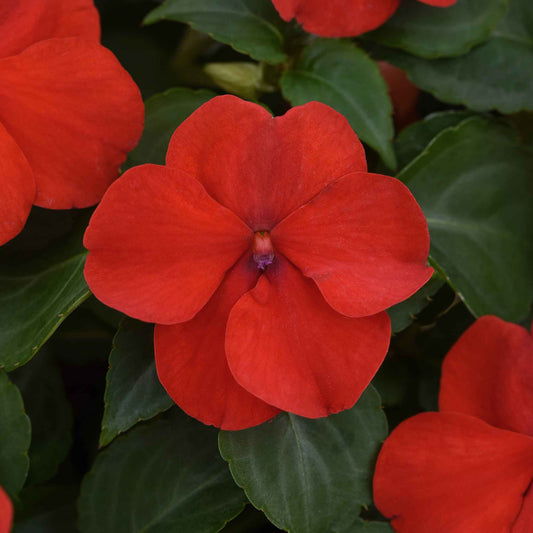-
main-collection-product-grid

Impatiens Seeds - Camelia Flowered Mixed
A southern gardener's favorite, this versatile annual thrives in full or partial sunSaleImpatiens Seeds - Camelia Flowered Mixed
A southern gardener's favorite, this versatile annual thrives in full or partial sunRegular price As Low As $4.99Regular priceUnit price per$28.99Sale price As Low As $4.99Sale -
main-collection-product-grid

Impatiens Seeds - Beacon Mix
Grows stronger and shines longer with resistance to impatiens diseaseImpatiens Seeds - Beacon Mix
Grows stronger and shines longer with resistance to impatiens diseaseRegular price $6.99Regular priceUnit price per -
main-collection-product-grid

Impatiens Seeds - Bush Mixed
Prolific bloomers with a compact growth habitImpatiens Seeds - Bush Mixed
Prolific bloomers with a compact growth habitRegular price As Low As $4.99Regular priceUnit price per -
main-collection-product-grid

Balsam Seeds - Impatiens
One of the easiest flowers to grow, plus beneficial to insectsBalsam Seeds - Impatiens
One of the easiest flowers to grow, plus beneficial to insectsRegular price As Low As $4.99Regular priceUnit price per -
main-collection-product-grid

Impatiens Seeds - Carmine
Luscious double flowers always look fresh, even in a heat waveImpatiens Seeds - Carmine
Luscious double flowers always look fresh, even in a heat waveRegular price As Low As $4.99Regular priceUnit price per -
main-collection-product-grid

Impatiens Seeds - Beacon Coral
Bring this must-have color to your shade gardenImpatiens Seeds - Beacon Coral
Bring this must-have color to your shade gardenRegular price $6.99Regular priceUnit price per -
main-collection-product-grid

Impatiens Seeds - Beacon Bright Red
Warm red blossoms enchant over a long bloom timeImpatiens Seeds - Beacon Bright Red
Warm red blossoms enchant over a long bloom timeRegular price $6.99Regular priceUnit price per -
main-collection-product-grid

Impatiens Seeds - Solarscape Magenta Bliss
Fully saturated violet-purple color at home in full-sun gardensImpatiens Seeds - Solarscape Magenta Bliss
Fully saturated violet-purple color at home in full-sun gardensRegular price $10.99Regular priceUnit price per
What we love about growing balsam impatiens
- Easy to grow and maintain
- Attracts butterflies and other pollinators
- Also known as touch-me-not flowers
- Shade and drought tolerant
impatiens: an annual favorite
You know the plant. The one that you accidentally touch and—pop!—you get pelleted with a few seeds. One of the botanical wonders of the world, impatiens (or Touch-Me-Nots) have been cultivated for years for pleasure and medicine. While there are multiple types of impatiens—the most popular being wallerina and balsamina—Eden Brothers offers four heirloom varieties of the latter. These cup-shaped single, sometimes double, blooms amidst serrated dark green foliage make garden balsam an exotic cultivar to display in your garden.
when and how to plant impatiens seeds
Impatiens grow profusely as self-seeding annuals in hardiness zones 3 through 10. These tropical plants can be direct seeded after all danger of frost or started indoors. Patience is essential with impatiens—these beauties are slow to germinate, but the wait is definitely worth it! Start impatiens seeds two to three months before the last frost of spring. Sow seeds in trays of seed-starting mix, but do not cover, as impatiens seeds need light to germinate. Maintain even moisture by misting seeds regularly.
Plant impatiens outside in sun or shade, so long as the soil is fertile. Once established, impatiens are drought tolerant—but the flowers do benefit from regular watering during the bloom season, which runs from late spring to fall. When seedlings reach four inches tall, pinch them back to a leaf node a couple inches down. As counterintuitive as it sounds, pinching promotes a healthier adult plant.
You may even opt to grow impatiens in a container pot; these no-fuss flowers are so adaptable, they will thrive anywhere. These compact plants only grow about a foot tall, so garden balsam is the perfect size for an edging plant or for ground cover. But be aware that wherever you plant impatiens this year, you’ll likely see volunteers next year; Touch-Me-Nots self-seed with vigor!
pollinator attracting blooms
Grow a few impatiens in your garden this year and you’ll understand why pollinators and birds just can’t keep away—hummingbirds, in particular, prefer the nectar of these bright ruffled flowers. Eden brothers has four heirloom varieties of balsam impatiens in colors ranging from carmine to pale lavender, and you’ll be remiss if you don’t grow all of them! For more information about planting, growing, and harvesting balsam impatiens seeds, see the Impatiens Seeds Planting Guide.




